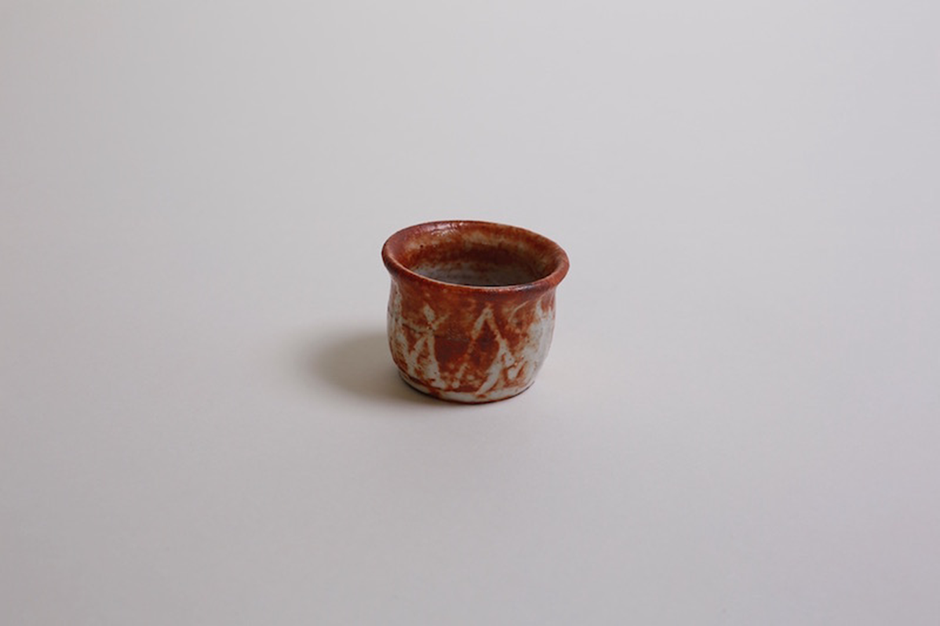
さけのみ W5.8cm D5.8cm H4.2cm


さけのみ W5.8cm D5.8cm H4.2cm
Kitaoji Rosanjin (Fusajiro)
In 1883, Kitaoji Rosanjin (real name: Fusajiro) was born as a son of Shake, a family of Shinto priests serving for Kamigamo shrine in Kyoto. Rosanjin’s father committed suicide before his birth, because of his mother, Fusa’s infidelity. After Fusa’s disappearance, Rosanjin was taken care by relatives, sometimes suffering from physical abuse. To get out of the misery, Rosanjin had been making efforts to find a way to independence since his early age. When he was 13 years old, influenced by Seiho Takeuchi’s works, he started to have interests in the Japanese-Style paint. When he applied for calligraphy competitions to gain money for painting materials, surprisingly he won the first prize one after another and became a well-known calligrapher. Later, his carving signboard and seal-engraving works also got reputation from professionals in those fields.
With his blessed talent, he chose to have a career as an artist. This decision was also influenced by beautiful memories from his early age; when he was 3 years old, he saw rhododendrons blooming all over the fields on the mountain behinds the Kamigamo shrine. He never forgot the outstanding spectacle and the decision he made “to live for the sake of beauty” for the rest of his life. This became the Rosanjin’s origin, “praise of wilderness”.
In 1915, Rosanjin encountered with a person who gave a great influence on his later life in Kanazawa. The person is Endai Hosono, a famous businessman, a sinologist, as well as a master of the tea ceremony. Under Endai Hosono, Rosanjin learned cuisine and pottery. Known as a gourmet, Rosanjin opened “Taigadou art exhibition” which dealt antique art with Takeshiro Nakamura and offered dished using fancy groceries with classic masterpieces of ceramics to regular customers. Soon after, he founded “Bishoku-Club”, a members-only restaurant. At that time, he also started to work on pottery and Rosanjin’s ceramic works created until his death reached up to 200,000.
Rosanjin lefts his words “pottery is the dress of dish”. Although most of the ceramists paid attention to clay and glazes to make a complete pottery, Rosanjin made pottery by setting the purpose to achieve the harmony of the pottery and the dish. For him, each pottery and dish does not mean anything. The state “what should be on the pottery is where it should be” was the ultimate meaning of the art for him. Therefore, there are not only pottery collectors but also Japanese cooks who love Rosanjin’s artworks. He established his status at Hoshigaoka tea-ceremony room which was famed as the best Japanese restaurant in those days, and left his name and work in later history.